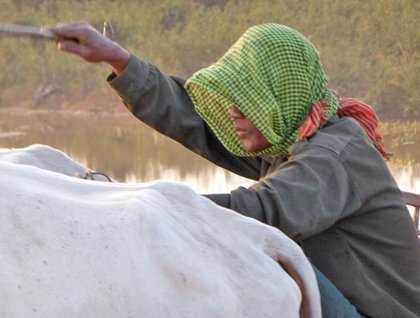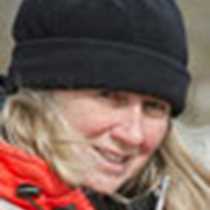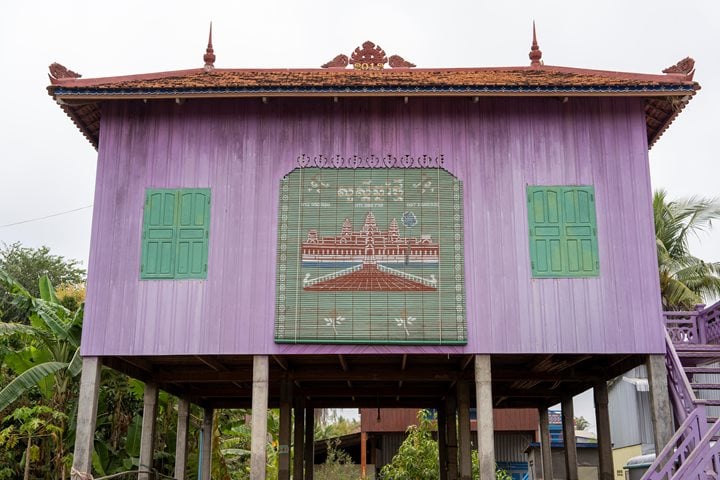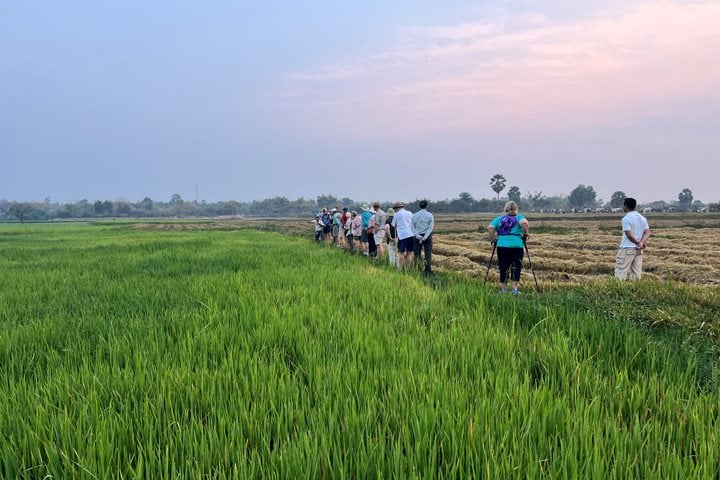Its life-blood flows from the Tibetan Plateau or pours from the skies in the monsoons. Like the circulatory system of a giant living organism, tributaries and canals deliver sustenance for all their component parts.
The Mekong, its drainage basin the bread-basket for millions, is our path to the interior where we will strive to discover the distant past. From space its capillary system must appear as a delicate spider web, lines of green or blue or café au lait reaching out and covering the delta region. Just as we have done, there are times the waters pile upon each other and travel upstream into the Tonle Sap and when they do nutrients are spread upon the land for a new agricultural season. Fish and rice and lotus too, dietary staples are found in profusion seasonally. Now when the water filters to the sea and the riverbanks dry and fracture hexagonally, the fields of rice are green and vegetables grow happily. The river ties together the diversity of our day.
The orange glow of a full moon was reflected upon the wet fields near Kampong Tralach on the banks of the Tonle Sap River. Pinpoints of light moved towards us like fireflies flitting along the dark banks. Above the croaking of frogs, soft voices could be heard and if one listened closely the sound of hooves plodding on an earthen road was like the heartbeat of the earth. The ruby glow of the sun had barely appeared above the horizon before we found ourselves ensconced in the back of an ox cart bouncing between rice and lotus fields where egrets moved elegantly. Royalty could not expect a more enthusiastic welcome than we received at the local school where all the children, morning and afternoon students and night ones as well, crowded four to a desk to say hello and demonstrate their English skills.
The flow of the river carried us south past Phnom Penh where we swung into the current and headed up the Mekong once again. The river widened. Sand bars grew to islands scattered here and there. Our minds drifted as perfect temperatures and sunny skies invited relaxation. We learned to dress as Cambodians and explored hidden corners of the ship.
In late afternoon the Jahan nosed into the shore and we scampered down the gangway to head out to explore once more. Houses more than 100 years old are found in Angkor Ban, one of the few places to have escaped the destructive forces of the Khmer Rouge. As with most villages, the pagoda dominates. Novice monks in bright colored robes scurried about and myriads of children followed us through winding alleys to the local marketplace.
It seemed as if the day warranted a special ending beyond the red of the setting sun and the subtle appearance of the only slightly waning moon. Barefoot on the beach, drinks and snacks in hand we danced or clustered around a fire and sent prayer balloons skyward, their orange glows becoming smaller and smaller until they were visible no longer.







